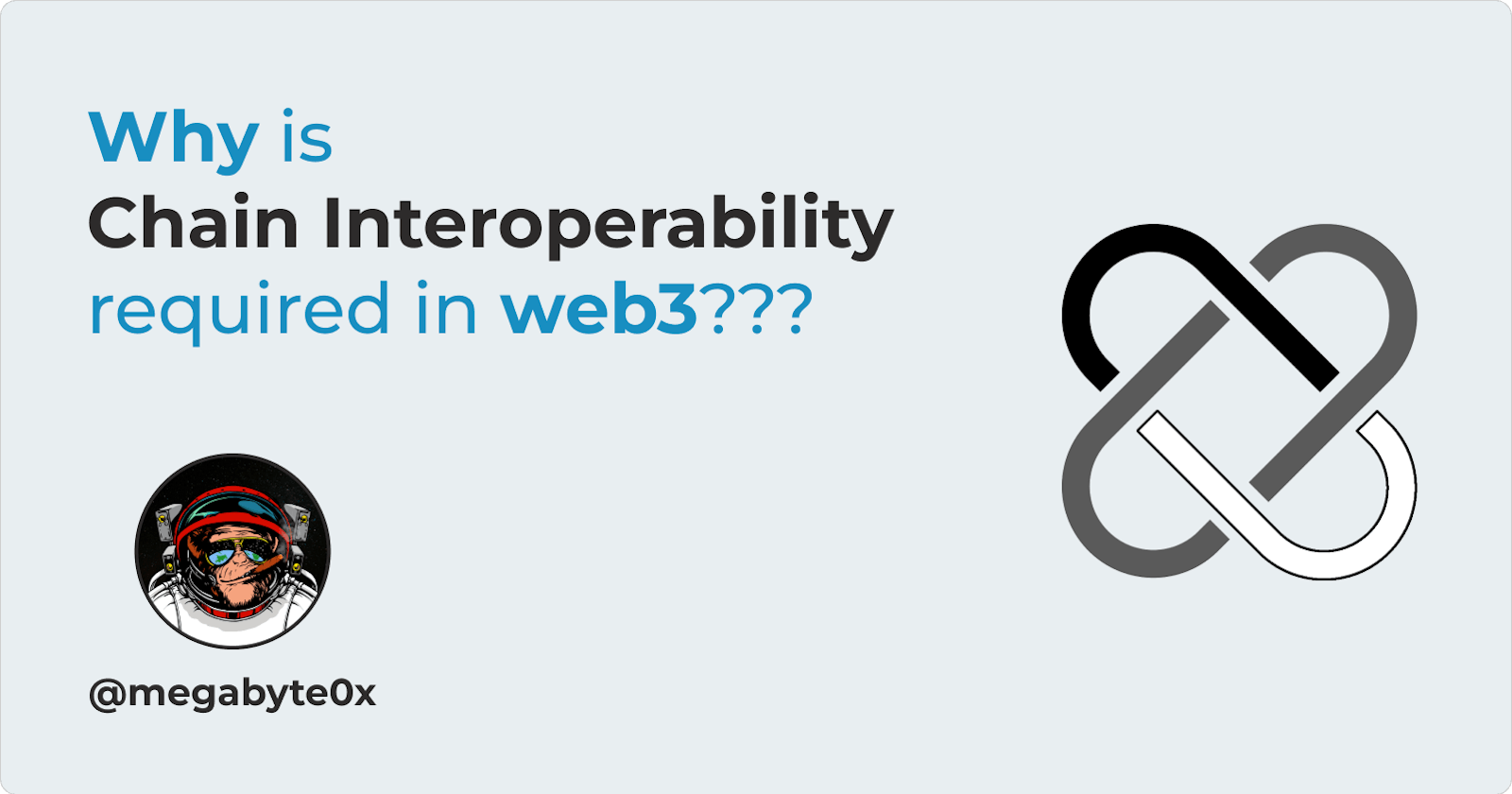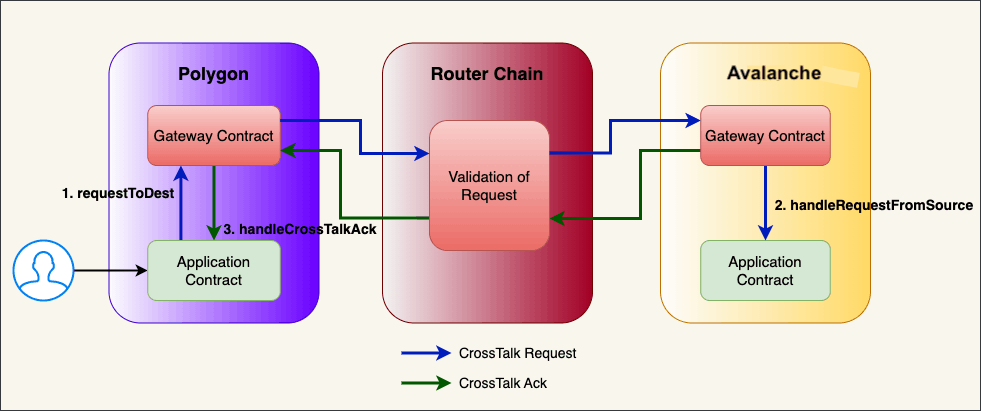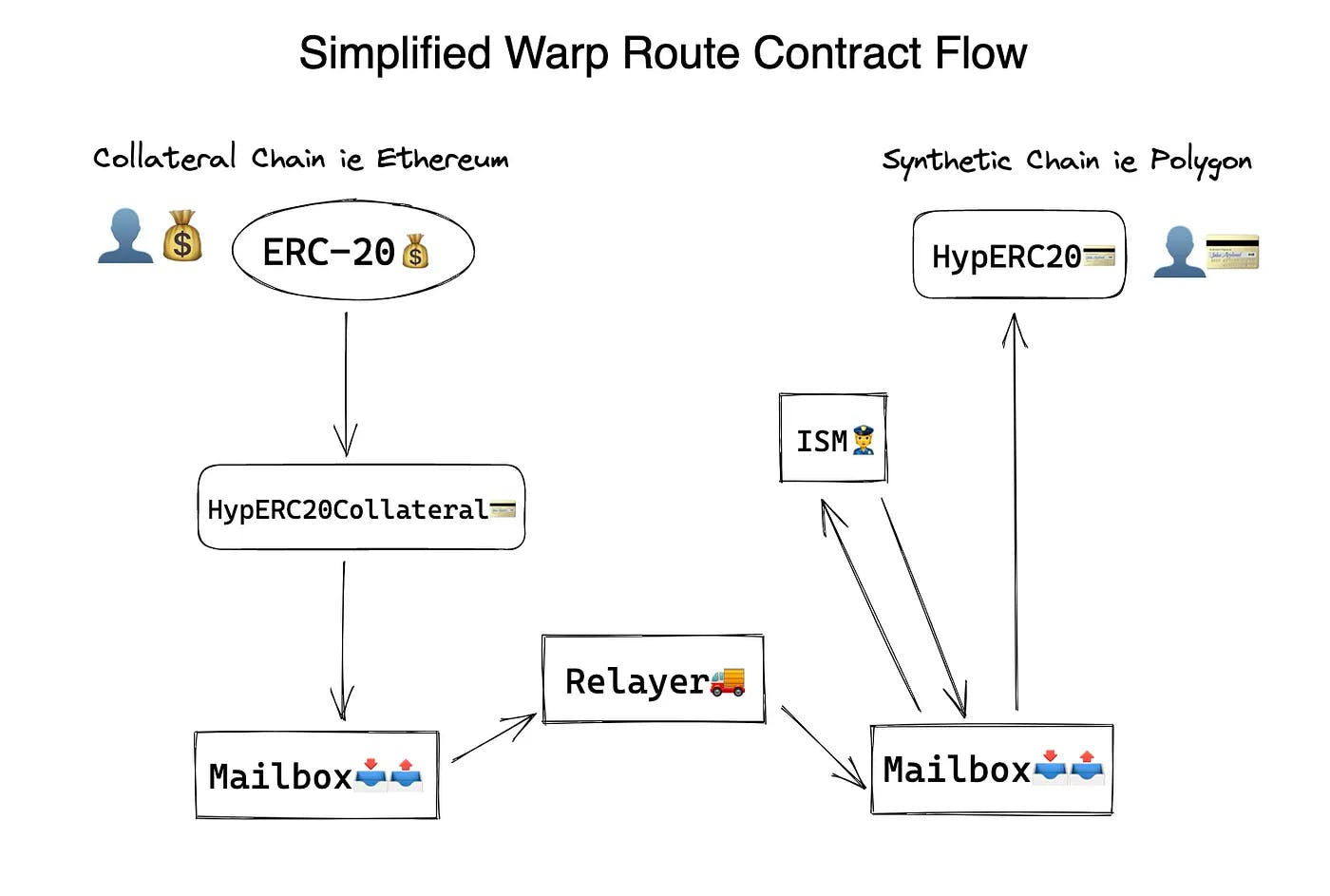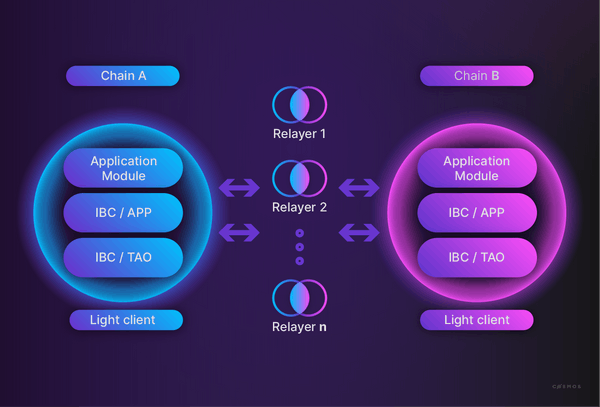Why is Chain Interoperability Required for Web3???

gm gm gm!!!
In today's post, let's learn about the chain interoperability (CI) requirements in Web3.
There has been a lot of recent fuss about cross-chain applications and protocols coming up with their chain/frameworks/libraries to help the devs build cross-chain applications and leverage the power of CI. But before anything, we should understand the requirements and advantages of CI. I will discuss a few significant areas in which interoperability will directly impact Web3.
Let's learn the fundamentals first 🙌
What is Chain Interoperability?
CI is the ability of blockchain networks to communicate and share data and resources to form a more extensive unified network.
Imagine a chain with good security and one with widespread decentralization coming together and sharing their properties. We will have a unified network that will be both secure and decentralized. This will encourage builders to build more cross-chain DApps using all the properties within a single network.
Benefits of Chain Interoperability in Web3
Let's review the benefits CI can bring.
Security
CI can increase blockchain security as the attacker will not target the security of one network but all the networks in that particular unified network. It also allows for sharing security protocols and best practices between different networks, enabling each network to benefit from the security features of other networks. Additionally, cross-chain communication can improve the verification of transactions and smart contracts, enhancing security by reducing the risk of malicious actors attempting to manipulate or tamper with the system.
For example, the Polkadot network allows interoperability between its parachains, which allows them to have their security mechanisms in addition to the security of the Polkadot network itself. This will benefit the overall network by sharing different security properties, which can increase the overall safety of the unified network.
Decentralization
CI allows different blockchains to operate independently while still being able to communicate and collaborate. This reduces the risk of single-point failure of the network and makes it more reliable for the developers and users. This also promotes that only a single entity or organization has significant control over the network.
For example, the Cosmos network enables interoperability between different blockchain networks through "zones" that can communicate with each other. These zones can be independent blockchains that operate independently, but they can also communicate with other zones through a shared hub called Cosmos Hub. This enables different blockchains to work independently while still being able to collaborate, reducing the risk of centralization.
Scalability
CI is vital for scaling blockchain networks. It helps reduce congestion (the number of transactions on a particular chain) and increases the transaction speed using resources and properties of different blockchain networks simultaneously. This is achieved through cross-chain transactions that allow for the execution of transactions across multiple blockchains.
For example, CI can improve the scalability of layer-2 solutions by enabling cross-chain communication. The IBC Protocol allows interoperability between different layer-2 solutions. This means that users on one layer-2 solution can execute transactions with users on another layer-2 solution, even if they are built on different blockchains.
Bridges: A Step Towards Interoperability
Let's check out bridges, what they are, and how they help with CI.
What are Bridges?
Bridges in the blockchain mean the same as in the real world. An object connecting two destinations. Bridges facilitate communication between different blockchains through the transfer of information and resources.
For Example, If you want to move your Ether from the Ethereum mainnet to Polygon Mainnet, you can use Polygon Bridge
Types of Bridges
There are two types of bridges.
Trusted Bridges
These centralized bridges will have an intermediatory between the user and the blockchain. An intermediary will first receive the user's transaction request before executing the transaction on the blockchain.
Trustless Bridges
These are decentralized bridges, only based on code, nothing in between. The user will have all power over their assets and can execute the transaction themselves. The security of this type of bridge will rely on the smart contract and the consensus of the underlying blockchain network.
Risks Associated with Bridges
Everything innovation comes with some risks so do bridges. Different types of risks are associated with each type of bridge.
In trusted bridges, there are censorship and custodial risks. The intermediaries can collab and pull the funds from the user wallets.
In trustless bridges, the main risk is software bugs because the technology is evolving, and there's a constant need to keep everything up to date.
Learn more about Bridges from here.
Protocols That Make Interoperability Possible
There are also protocols that facilitate CI; let's look at the most prominent ones.
Router Protocol
Router Protocol has its chain, which works on proof-of-stake. The validators of the chain not only validate the state changes of the router chain and monitor state changes on other chains. Applications on Router can write custom logic to trigger events in response to these external state changes. Additionally, with Router, applications can leverage a trustless network of relayers to update states on external chains.

You can learn Building Cross-Chain NFT using Router Protocol here 👇🏻
Hyperlane
Hyperlane is a permissionless interoperability solution that anyone can use permissionless on any chain layer 1, layer 2, rollup, etc.
It also provides the developer to build their security model and the ability to choose from a few sets of default security mechanisms.

Inter Blockchain Communication (IBC)
IBC is also a permissionless interoperability solution; it uses two layers to go cross-chain. The first is the app layer, in which standards define the application handlers to pass the data packets over the transport layer. The second one, TAO, is the infra layer for transporting, retrieving, and ordering data packets.

Connect with me on Lens🌿[@megabyte0x.lens] or Twitter[@megabyte0x].
Also, feel free to share your learnings and reach out to me if you've any doubts or questions.
Happy building! 🛠️
WAGMI🚀
 megabyte
megabyte